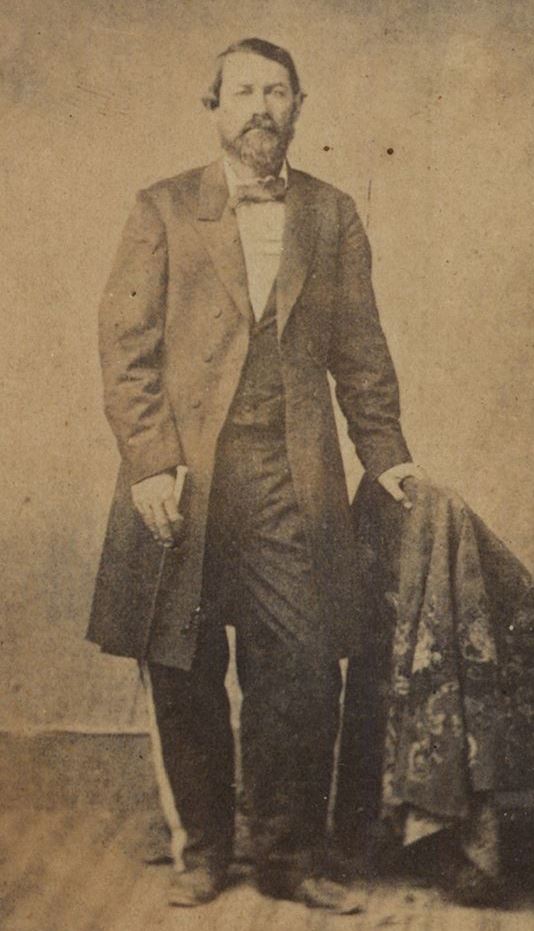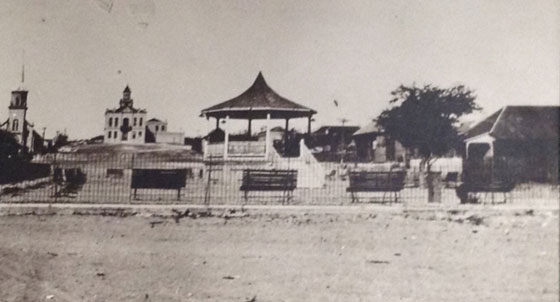Juan Cortina
Born in 1824 to an aristocratic family with a large land grant in South Texas, Juan Cortina saw his property and those of his neighbors threatened by the U.S. acquisition of Texas. Cortina recruited an army that could fight on both sides of the new border. In what became known as the First Cortina War, he and his army took control of Brownsville. Following negotiations with Mexican authorities, Cortina retreated but issued a proclamation asserting the rights of Mexicans and Tejanos, and demanded punishment of anyone who violated those rights. Tensions arose between Cortina and the Texas Rangers. In December 1859, the Rangers, led by John S. “Rip” Ford, and Major Samuel P. Heitzelman, pursued Cortina’s army. In a battle in Rio Grande City, Cortina was defeated, losing sixty men. He and his surviving followers retreated into Mexico after attempting to capture the steamboat Ranchero, owned by Cortina's hated enemies Mifflin Kenedy and Richard King.
With the outbreak of the U.S. Civil War in May 1861, Cortina’s army invaded the town of Zapata and was defeated by Confederate officer Col. Santos Benavides. Regarded by Anglos as an outlaw, he is remembered by many in the Valley as a heroic figure who fought for the rights of Hispanic people. Cortina became involved in Mexico’s own civil war against the French, later serving as governor of Tamaulipas and commander of the Mexican Army of the North. He died in Mexico, exiled from his family's land grant, in 1894.
Listen
Nacido en 1824 en el seno de una distinguida familia, titular de una gran concesión de tierras en el Sur de Texas, Juan Cortina vio sus propiedades y las de sus vecinos amenazadas por la anexión estadounidense. Cortina reclutó un ejército capaz de luchar a ambos lados de la nueva frontera y, en lo que acabó conociéndose como la «Primera Guerra de Cortina», sus fuerzas tomaron control de la ciudad de Brownsville. Cortina fue repelido por una milicia local llamada «Los Tigres de Brownsville», pero proclamó una declaración sobre los derechos de los mexicanos y los tejanos en la que exigía la condena de quienes los transgredieran. Las tensiones entre Cortina y los Rangers de Texas se acrecentaron y, en diciembre de 1859, estos últimos dirigidos por John S. «Rip» Ford y el mayor Samuel P. Heitzelman acosaron al ejército de Cortina. En la batalla que tuvo lugar en Río Grande City, Cortina fue derrotado y perdió sesenta efectivos, aunque él mismo y los supervivientes de entre sus hombres se retiraron hacia México tras intentar tomar el vapor Ranchero, una embarcación propiedad de sus denostados enemigos Mifflin Kenedy and Richard King.
Con el estallido de la Guerra de Secesión estadounidense en mayo de 1861, las fuerzas de Cortina invadieron la población de Zapata, sólo para ser derrotadas por el capitán confederado y futuro coronel Santos Benavides. Considerado un forajido por los anglosajones de la región, otros le recuerdan en El Valle como una figura heroica que luchó por los derechos del pueblo hispano. Cortina se implicó en la guerra mexicana contra el ejército francés, fungiendo posteriormente como gobernador de Tamaulipas y comandante en jefe del Ejército Mexicano del Norte. Falleció en México en 1894, exiliado de las tierras pertenecientes a su familia.
Escucha
Details
Location: Historical marker is located 100 E. Main St., Rio Grande City, Texas Battle with U.S. Army and Texas Rangers is located on the west side of city cemetery at 500 W. 2nd St., Rio Grande City, Texas.
Access: Open to public at all times.
Contact: Elisa Beas, City Administrator.


